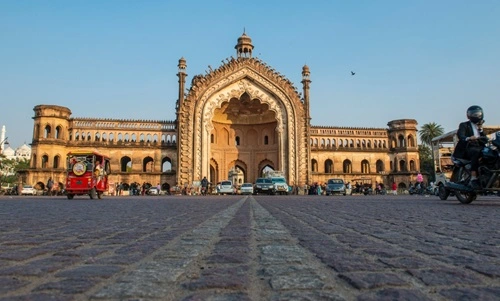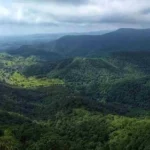Lucknow, the capital of Uttar Pradesh, is a city that beautifully blends history, culture, and modernity. Known as the City of Nawabs, Lucknow is renowned for its Mughal-era architecture, rich culinary heritage, and warm hospitality. From the grandeur of Bara Imambara to the culinary delights of Tunday Kababi, every corner of Lucknow tells a story of its illustrious past and cultural diversity. Visiting Lucknow is like stepping back in time, where you experience not only a city but a heritage that has been preserved for centuries.
Choosing the best time to visit Lucknow can make your trip more enjoyable, allowing you to experience the city’s highlights comfortably and immerse yourself in its vibrant festivals, cuisine, and sights. Here’s a guide to help you decide when to visit Lucknow to make the most of your time in this enchanting city.

Best Seasons to Visit Lucknow
1. Winter (October to March)
Winter is the most popular season to visit Lucknow, as the weather is cool and comfortable, with temperatures ranging between 8°C and 22°C. The pleasant climate makes it perfect for sightseeing, leisurely strolls through historic sites, and enjoying the city’s culinary offerings.
The city’s landmarks, such as the Bara Imambara, Chota Imambara, and Rumi Darwaza, are best explored in winter when the sun is mild, and the days are clear. Walking through the gardens of Sikandar Bagh or exploring the British Residency ruins becomes a delightful experience without the discomfort of heat.
Winter is also the season of festivals in Lucknow, bringing a unique vibrancy to the city. Lucknow Mahotsav, held in November or December, is a cultural extravaganza celebrating Lucknow’s heritage. The event includes traditional dance and music performances, craft exhibitions, and food stalls serving authentic Awadhi cuisine, making it an ideal time for visitors to immerse themselves in local culture.
If you visit in early January, you can witness Republic Day celebrations at Janeshwar Mishra Park, where parades and cultural performances are held, adding a patriotic charm to your experience. Winter also allows food lovers to indulge in the city’s famous dishes like galouti kebabs, kakori kebabs, and piping-hot chai without worrying about the heat.
2. Summer (April to June)
Summer in Lucknow can be quite intense, with temperatures often soaring above 40°C. The heat can make daytime sightseeing challenging, but early mornings and evenings are relatively cooler and can still be enjoyed. If you’re visiting Lucknow in summer, it’s advisable to plan indoor activities or explore the city during early hours to avoid the midday heat.
While this may not be the peak tourist season, visiting Lucknow in summer has its advantages. Tourist attractions and markets are less crowded, allowing for a more relaxed experience. Photography enthusiasts can capture monuments like the Rumi Darwaza and Bara Imambara without the usual crowds. Additionally, summer often brings discounted rates on hotels and accommodations, making it a budget-friendly season for travelers.
To make the most of a summer visit, spend afternoons exploring indoor attractions like museums, art galleries, and cultural centers. The State Museum in Lucknow, located in the Lucknow Zoo, houses artifacts from the Gupta and Kushan periods, as well as impressive collections of sculpture, coins, and weapons. Spending time here during the hottest part of the day provides a respite from the heat while immersing visitors in India’s rich history.
3. Monsoon (July to September)
The monsoon season brings moderate to heavy rainfall to Lucknow, transforming the city’s landscape into a lush, green paradise. Temperatures during monsoon range from 25°C to 30°C, and the rain brings relief from the summer heat. The monsoon atmosphere adds a unique charm to Lucknow, especially if you enjoy the rain-washed beauty of historic monuments and gardens.
One of the best places to visit during monsoon is the Ambedkar Memorial Park, which looks particularly picturesque under overcast skies. The monsoon season also adds a mystical quality to Lucknow’s architectural wonders, as the raindrops enhance the hues of the red sandstone structures. However, it’s wise to carry an umbrella or raincoat, as the rain can be unpredictable.
The monsoon season also brings a quieter ambiance to the city, with fewer tourists, allowing for a more peaceful experience. This is a great time to explore the city’s markets, where you can enjoy leisurely shopping and find some of the finest chikankari garments without the usual hustle and bustle.
Key Attractions and Activities in Lucknow
- Bara Imambara and Bhul Bhulaiya: One of Lucknow’s most iconic landmarks, Bara Imambara, is a marvel of Mughal architecture. The Bhul Bhulaiya (a maze) within the complex offers a unique experience for visitors who enjoy solving puzzles. The monument’s grandeur is best appreciated in winter when you can explore its expansive corridors comfortably.
- Chota Imambara: This stunning structure, also known as the Hussainabad Imambara, is known for its intricate designs and chandeliers. The reflection of the Imambara in its adjacent water tank makes it a photographer’s delight, especially during the evening hours.
- Rumi Darwaza: Often referred to as the Turkish Gate, the Rumi Darwaza is a magnificent gateway in Lucknow, showcasing the city’s architectural heritage. Its grandeur is best captured at dawn or dusk, when the lighting is perfect for photography.
- Tunday Kababi and Awadhi Cuisine: Lucknow is famous for its food, especially its kebabs and biryanis. A visit to the iconic Tunday Kababi is a must for food lovers. Winter evenings are perfect for savoring galouti kebabs, Awadhi biryani, and a variety of street foods available throughout the city.
- Hazratganj Market and Aminabad Bazaar: For shopping, Hazratganj and Aminabad are top destinations. These bustling markets are perfect for buying traditional chikankari garments, jewelry, and handicrafts. Hazratganj also has cafes and bookstores, making it ideal for a leisurely evening.
Practical Tips for Visiting Lucknow
- Clothing: Wear comfortable, weather-appropriate clothing based on the season. Light, breathable attire is best for summer, while a shawl or light sweater is helpful for winter mornings and evenings.
- Local Transport: Lucknow has a well-connected network of auto-rickshaws, cycle rickshaws, and taxis, making it easy to navigate the city. For a local experience, try a cycle rickshaw ride through the old city areas.
- Respect Local Etiquette: Lucknow is known for its courteous culture, so a respectful demeanor is appreciated. When visiting religious sites, dress modestly and remove your footwear where required.
- Festival Timings: Check the dates for festivals like Diwali, Eid, and Lucknow Mahotsav if you want to experience the city’s festivities. During these times, markets and monuments are often decorated, adding to the city’s vibrant atmosphere.
Conclusion
Lucknow is a city that captivates visitors with its cultural richness, historical architecture, and culinary delights. Each season brings a unique experience, from the festive spirit of winter to the peaceful monsoon ambiance. Whether you’re here to explore grand monuments, savor delicious kebabs, or immerse yourself in traditional markets, planning your visit to align with the season that suits your preferences will make your journey even more enjoyable. Lucknow’s charm lies in its timeless appeal and warm hospitality, leaving every traveler with memories of a city where history and modernity coexist gracefully.


